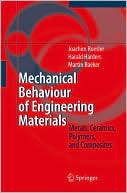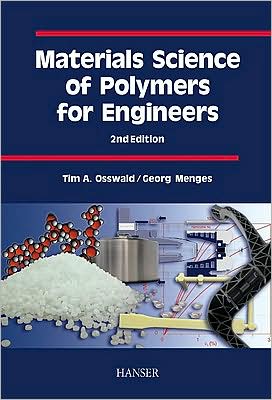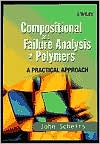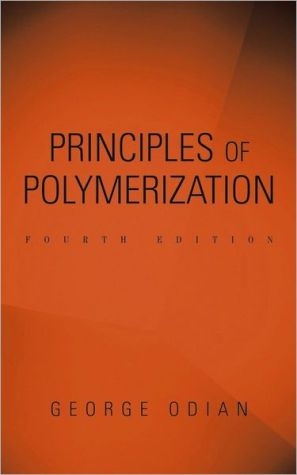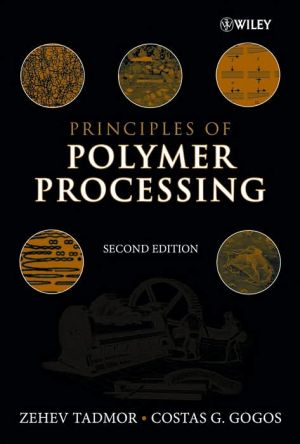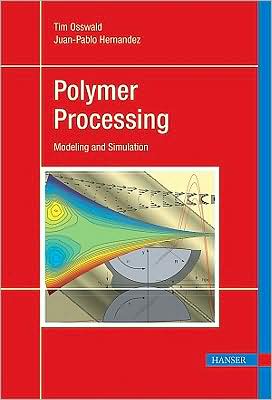Mechanical Behaviour of Engineering Materials
Search in google:
How do engineering materials deform when bearing mechanical loads? To answer this crucial question, the book bridges the gap between continuum mechanics and materials science. The different kinds of material deformation (elasticity, plasticity, fracture, creep, fatigue) are explained in detail. The book also discusses the physical processes occurring during the deformation of all classes of engineering materials (metals, ceramics, polymers, and composites) and shows how these materials can be strengthened to meet the design requirements. It provides the knowledge needed in selecting the appropriate engineering material for a certain design problem. The reader will thus learn how to critically employ design rules and thus to avoid failure of mechanical components.‘Mechanical Behaviour of Engineering Materials’ is both a valuable textbook and a useful reference for graduate students and practising engineers.
The structure of materials 1Atomic structure and the chemical bond 1Metals 5Metallic bond 5Crystal structures 7Polycrystalline metals 14Ceramics 15Covalents bond 16Ionic bond 18Dipole bond 19Van der Waals bond 19Hydrogen bond 20The crystal structure of ceramics 21Amorphous ceramics 22Polymers 23The chemical structure of polymers 24The structure of polymers 25Elasticity 31Deformation modes 31Stress and strain 32Stress 32Strain 34Atomic interactions 37Hooke's law 39Elastic strain energy 42Elastic deformation under multiaxial loads 43Isotropic material 46Cubic lattice 50Orthorhombic crystals and orthotropic elasticity 53Transversally isotropic elasticity 54Other crystal lattices 55Examples 55Isotropy and anisotropy of macroscopic components 57Temperature dependence of Young's modulus 60Plasticity and failure 63Nominal and true strain 64Stress-strain diagrams 68Types of stress-strain diagrams 68Analysis of a stress-strain diagram 73Approximation of the stress-strain curve 81Plasticity theory 83Yield criteria 84Yield criteria of metals 86Yield criteria of polymers 92Flow rules 93Hardening 97Application of a yield criterion, flow rule, and hardening rule 103Hardness 107Scratch tests 108Indentation tests 108Rebound tests 110Material failure 110Shear fracture 111Cleavage fracture 114Fracture criteria 116Notches 119Stress concentration factor 119Neuber's rule 122Tensile testing of notched specimens 125Fracture mechanics 129Introduction to fracture mechanics 129Definitions 129Linear-elastic fracture mechanics 131The stress field near a crack tip 131The energy balance of crack propagation 134Dimensioning pre-cracked components under static loads 142Fracture parameters of different materials 144Material behaviour during crack propagation 146Subcritical crack propagation 150Measuring fracture parameters 152Elastic-plastic fracture mechanics 158Crack tip opening displacement (CTOD) 158J integral 159Material behaviour during crack propagation 161Measuring elastic-plastic fracture mechanics parameters 163Mechanical behaviour of metals 165Theoretical strength 165Dislocations 166Types of dislocations 166The stress field of a dislocation 168Dislocation movement 170Slip systems 173The critical resolved shear stress 178Taylor factor 182Dislocation interaction 184Generation, multiplication and annihilation of dislocations 185Forces acting on dislocations 187Overcoming obstacles 189Athermal processes 190Thermally activated processes 193Ductile-brittle transition 196Climb 196Intersection of dislocations 197Strengthening mechanisms 198Work hardening 198Grain boundary strengthening 200Solid solution hardening 203Particle strengthening 209Hardening of steels 218Mechanical twinning 223Mechanical behaviour of ceramics 227Manufacturing ceramics 228Mechanisms of crack propagation 229Crack deflection 230Crack bridging 230Microcrack formation and crack branching 231Stress-induced phase transformations 232Stable crack growth 234Subcritical crack growth in ceramics 234Statistical fracture mechanics 236Weibull statistics 236Weibull statistics for subcritical crack growth 242Measuring the parameters [sigma subscript 0] and m 243Proof test 246Strengthening ceramics 248Reducing defect size 249Crack deflection 249Microcracks 251Transformation toughening 252Adding ductile particles 255Mechanical behaviour of polymers 257Physical properties of polymers 257Relaxation processes 257Glass transition temperature 260Melting temperature 261Time-dependent deformation of polymers 263Phenomenological description of time-dependence 263Time-dependence and thermal activation 266Elastic properties of polymers 269Elastic properties of thermoplastics 269Elastic properties of elastomers and duromers 273Plastic behaviour 274Amorphous thermoplastics 275Semi-crystalline thermoplastics 281Increasing the thermal stability 284Increasing the glass and the melting temperature 284Increasing the crystallinity 287Increasing strength and stiffness 289Increasing the ductility 290Environmental effects 292Mechanical behaviour of fibre reinforced composites 295Strengthening methods 296Classifying by particle geometry 296Classifying by matrix systems 299Elasticity of fibre composites 300Loading in parallel to the fibres 301Loading perpendicular to the fibres 301The anisotropy in general 302Plasticity and fracture of composites 303Tensile loading with continuous fibres 303Load transfer between matrix and fibre 305Crack propagation in fibre composites 308Statistics of composite failure 312Failure under compressive loads 313Matrix-dominated failure and arbitrary loads 315Examples of composites 315Polymer matrix composites 315Metal matrix composites 321Ceramic matrix composites 323Biological composites 325Fatigue 333Types of loads 333Fatigue failure of metals 337Crack initiation 338Crack propagation (stage II) 342Final fracture 344Fatigue of ceramics 345Fatigue of polymers 346Thermal fatigue 346Mechanical fatigue 347Fatigue of fibre composites 347Phenomenological description of the fatigue strength 349Fatigue crack growth 349Stress-cycle diagrams (S-N diagrams) 357The role of mean stress 366Fatigue assessment with variable amplitude loading 368Cyclic stress-strain behaviour 369Kitagawa diagram 373Fatigue of notched specimens 375Creep 383Phenomenology of creep 383Creep mechanisms 388Stages of creep 388Dislocation creep 389Diffusion creep 393Grain boundary sliding 396Deformation mechanism maps 396Creep fracture 400Increasing the creep resistance 401Exercises 407Packing density of crystals 407Macromolecules 407Interaction between two atoms 407Bulk modulus 408Relation between the elastic constants 408Candy catapult 409True strain 410Interest calculation 410Large deformations 410Yield criteria 410Yield criteria of polymers 411Design of a notched shaft 411Estimating the fracture toughness K[subscript Ic] 412Determination of the fracture toughness K[subscript Ic] 412Static design of a tube 413Theoretical strength 414Estimating the dislocation density 414Thermally activated dislocation generation 414Work hardening 415Grain boundary strengthening 415Precipitation hardening 415Weibull statistics 415Design of a fluid tank 416Subcritical crack growth of a ceramic component 417Mechanical models of viscoelastic polymers 417Elastic damping 418Eyring plot 418Elasticity of fibre composites 419Properties of a polymer matrix composite 419Estimating the number of cycles to failure 419Miner's rule 420Larson-Miller parameter 421Creep deformation 421Relaxation of thermal stresses by creep 421Solution 423Using tensors 451Introduction 451The order of a tensor 451Tensor notations 452Tensor operations and Einstein summation convention 453Coordinate transformations 456Important constants and tensor operations 457Invariants 458Derivations of tensor fields 459Miller and Miller-Bravais indices 461Miller indices 461Miller-Bravais indices 462A crash course in thermodynamics 465Thermal activation 465Free energy and free enthalpy 466Phase transformations and phase diagrams 468The J integral 473Discontinuities, singularities, and Gauss' theorem 473Energy-momentum tensor 475J integral 476J integral at a crack tip 479Plasticity at the crack tip 481Energy interpretation of the J integral 482References 485List of symbols 493Index 499
